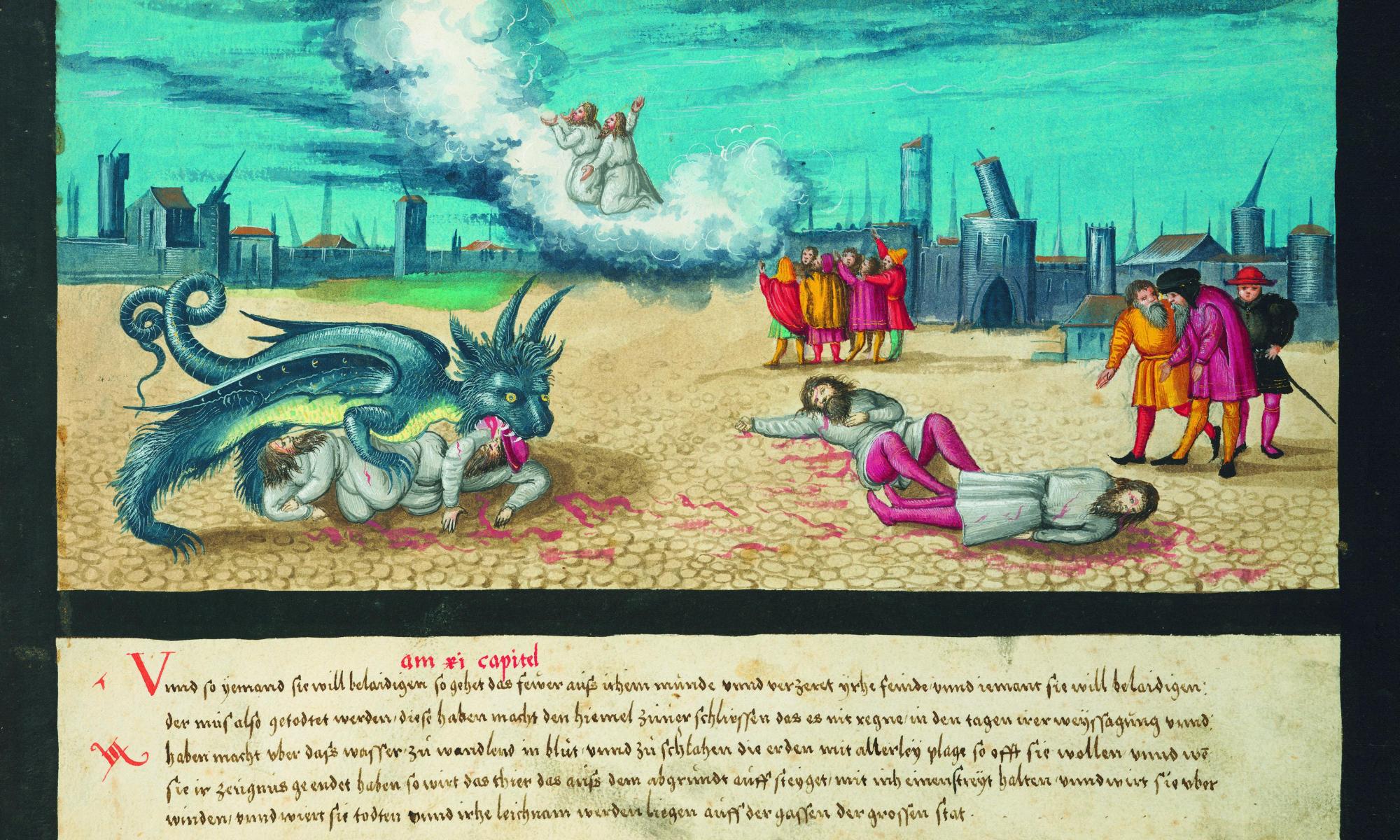Turbulent Skies, Devastated Cities
Two prophets appear repeatedly against the backdrop of a city that may be both Jerusalem and Babylon. Killed by the ‘beast that rises from the bottomless pit’, they are recalled by God and ascend to heaven. The towers of the city are already starting to fall in an earthquake that will kill thousands, according to the prophetic text of the Book of Revelation that is illustrated here. This impassioned, awkward image was created in the 16th century, when the destruction of cities took on new historical force during the religious and political chaos of the Reformation.
These cities are a dark side of the miraculous; their wondrous, dazzling destruction of communities sends a collective message that is more important than the individual fates of inhabitants. They form a handful of examples from the Augsburg Book of Miracles, made by an anonymous group of artists for an anonymous German patron around 1548–52. The Book of Miracles is a unique find that came to light in the last decade. It recently appeared in a facsimile edition that recreates the experience of owning the manuscript and turning its dramatic pages.1 Printed books of wondrous events circulated often in the 16th century, but unique hand-coloured manuscripts like this were much rarer.
Image: The Beast from the Bottomless Pit. The Book of Miracles, Taschen, Cologne, 2014.


